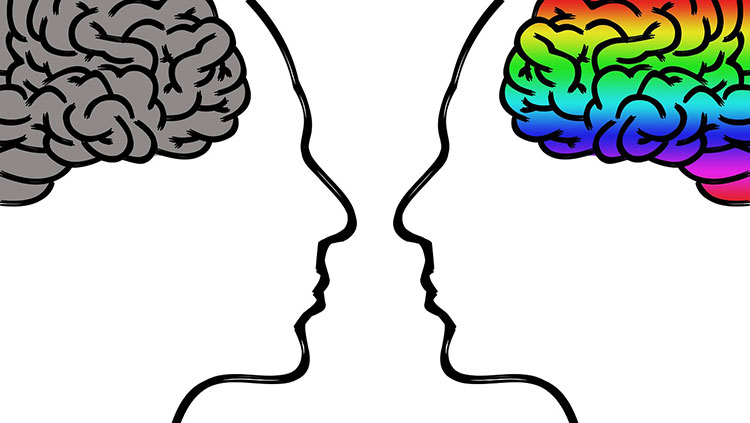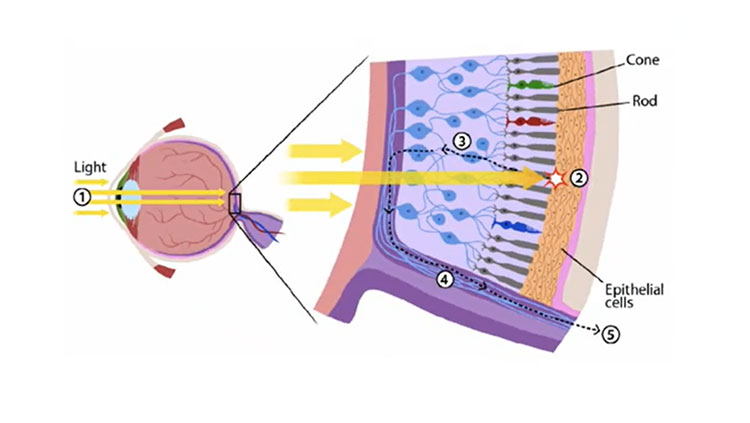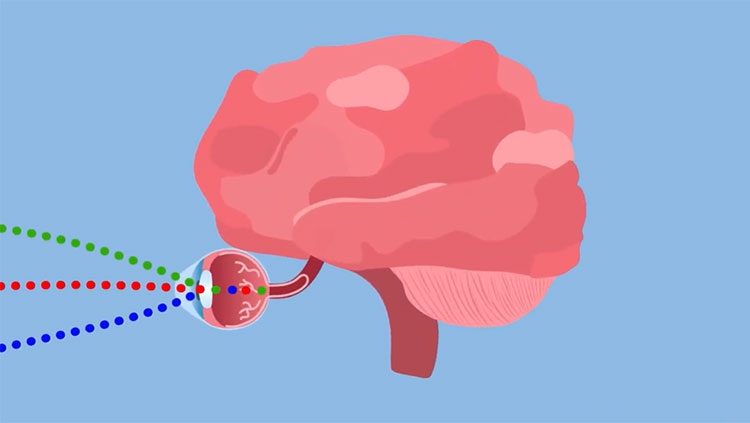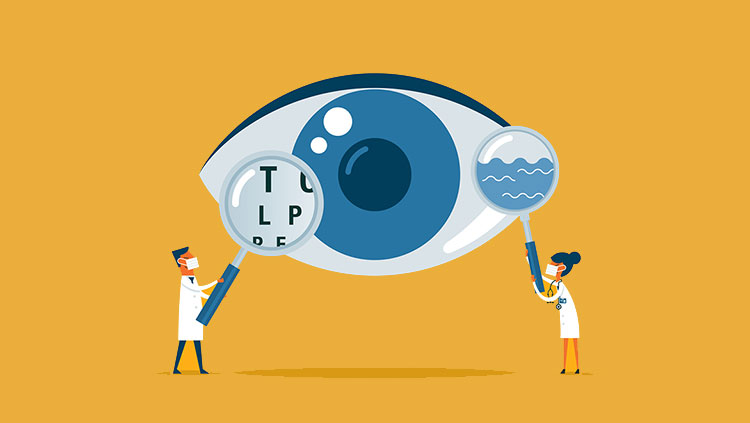Supporting Cast Shines in the Retina
- Published4 Feb 2020
- Author Charlie Wood
- Source BrainFacts/SfN
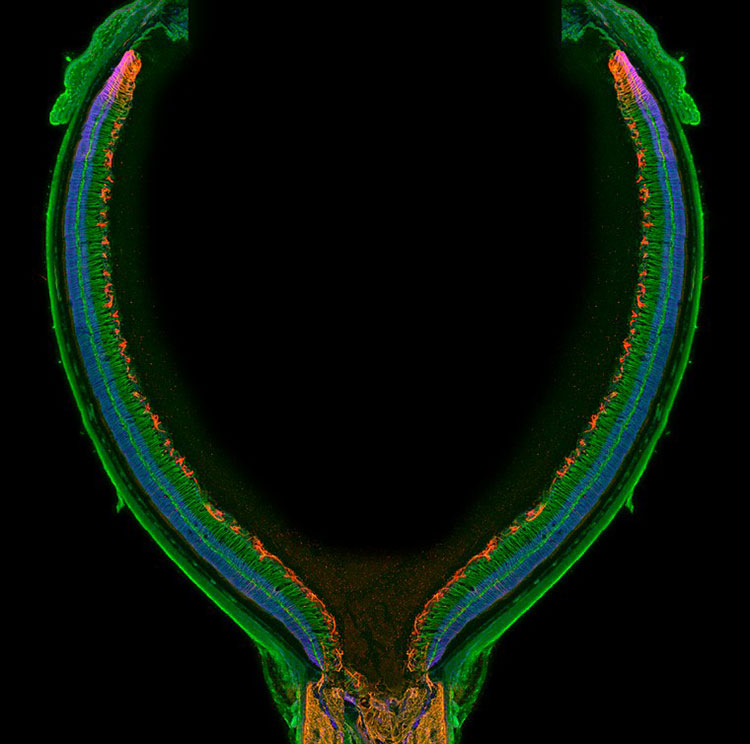
The retina is a thin layer of tissue that runs along the inside of the back of the eye. The rods and cones in the retina help turn light into electrical signals and attract a lot of attention, but they’re only half the story. Many of the cells in the retina act as supporting characters to the neuron chains responsible for handling visual information directly.
In this image of a one-month old mouse retina, Müller glia cells shine green. Müller cells stretch across the whole retina, literally supporting the neurons by wrapping around them and holding them up. Astrocytes, highlighted in red, are a second type of supporting cell with many jobs. They assist developing blood vessels, for instance, and help make sure neurons have the resources they need and may even influence their ability to generate electrical signals. Once thought of purely as coffee-fetching interns, astrocytes are recognized as active contributors to the important information-processing work neurons do.
CONTENT PROVIDED BY
BrainFacts/SfN
References
Kolb, H. (2013, November). Glial cells of the Retina. Retrieved October 4, 2019, from https://webvision.med.utah.edu/book/part-ii-anatomy-and-physiology-of-the-retina/glial-cells-of-the-retina/.
Tao, C., & Zhang, X. (2014). Development of astrocytes in the vertebrate eye. Developmental Dynamics : An Official Publication of the American Association of Anatomists, 243(12), 1501–1510. doi: 10.1002/dvdy.24190
Also In Vision
Trending
Popular articles on BrainFacts.org



